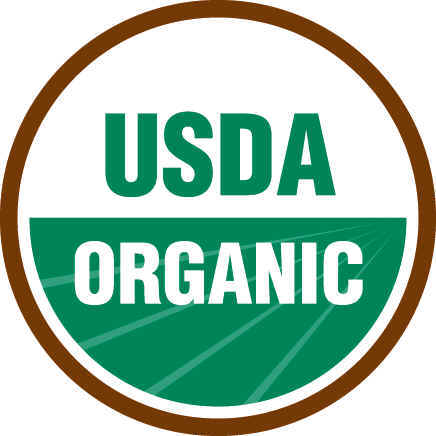Buying local VS. Organic
What is Organic farming?
Organic farming began as a small initiative supplying local markets with chemical free produce but with growing popularity we now see an organic agricultural industry known as Big Organics which is designed for high output. Big Organics has become just another version of conventional farming with "better" environmental practices.

Certified Organic practices means seeds and organisms are NON-GMO or not genetically modified and are not typically treated with conventional synthetic fertilizers or pesticides. HOWEVER, they can be treated with "organic" pesticides and fungicides. Organic pesticide is derived from the natural source and is rarely ever processed, some examples are
sulfur, rotenone and copper. Also, keep in mind that just because it is an organic pesticide does not necessarily mean it is safe to consume. In opposition to popular belief that organic doesn't use synthetic pesticides it actually does. There is a small list of synthetic pesticides that has been approved by the USDA in crop production so long as "the use of such substances do not contribute to contamination of crops, soil, or water"(e-CFR). The list of synthetic substances can be found on the e-CFR link.
Another aspect to consider when buying organic is the food loss/wastage from the time it leaves the farm to the time it gets to the grocery store, the "food miles", the packaging and the overall energy efficiency of all these processes; not to mention the loss of nutrients in the food itself since produce starts to lose nutrients the moment it is picked.
- Did you know:
- "California produces
more than 90% of all U.S. organic sales
for 14 different commodities, including 99% of walnuts, lemons, figs and
artichokes, and 100% of almonds and
dates" (California Organic Agriculture Production).
- "The energy cost in the food industry ranks third among all input costs behind raw material and labour. Two main types of energy, namely fuels such as coal, natural coal and petroleum oil and electricity are use in food processing facilities" (EPA) (Sustainable diets)
- "California produces more than 90% of all U.S. organic sales for 14 different commodities, including 99% of walnuts, lemons, figs and artichokes, and 100% of almonds and dates" (California Organic Agriculture Production).
- "The energy cost in the food industry ranks third among all input costs behind raw material and labour. Two main types of energy, namely fuels such as coal, natural coal and petroleum oil and electricity are use in food processing facilities" (EPA) (Sustainable diets)
Doesn't it seem somewhat counterproductive? By trying to be environmentally friendly and eat "organic" your food most often is shipped from thousands of miles away burning tons fossil fuels in the process.

What is Local:

Locally grown food is defined as food produced near the consumer but does not specify the geographic component of what it means to be "local". More than half of consumers believe that local is 100 miles or less and 37% thought it was anywhere in the state in which they lived (Sustainable Table). However, buying local produce is still more energy efficient when comparing to organic produce that is being shipped from California to Indiana. Local foods cut the middle man out and do not involve processing, packaging and transporting because they have a shorter distribution distance between grower and consumer. They have what is known as "direct to consumer market" meaning farmers sell their product directly to consumers without having to go through a third party. You can often participate in CSA's to get locally sourced food or shop at your local farmers market. There are plenty of avenues to shop for local produce, especially here in Northern Indiana.
What most people fail to realize is most often times local farmers practice organic sustainable methods and don't have USDA certification because its costly, they don't want the government in their business, they don't want to take the time to fill it out, whatever the reason.
You are supporting local farms and their families, supporting your local economy, and protecting local farms and their farmlands when you buy locally. The best way to know how your food is produced is to ask your farmer.
You are supporting local farms and their families, supporting your local economy, and protecting local farms and their farmlands when you buy locally. The best way to know how your food is produced is to ask your farmer.
EXTRA links:
Intro to organic practices - USDA
To learn more about the NON-GMO product here is the link to their website: The NON-GMO Project



Comments
Post a Comment